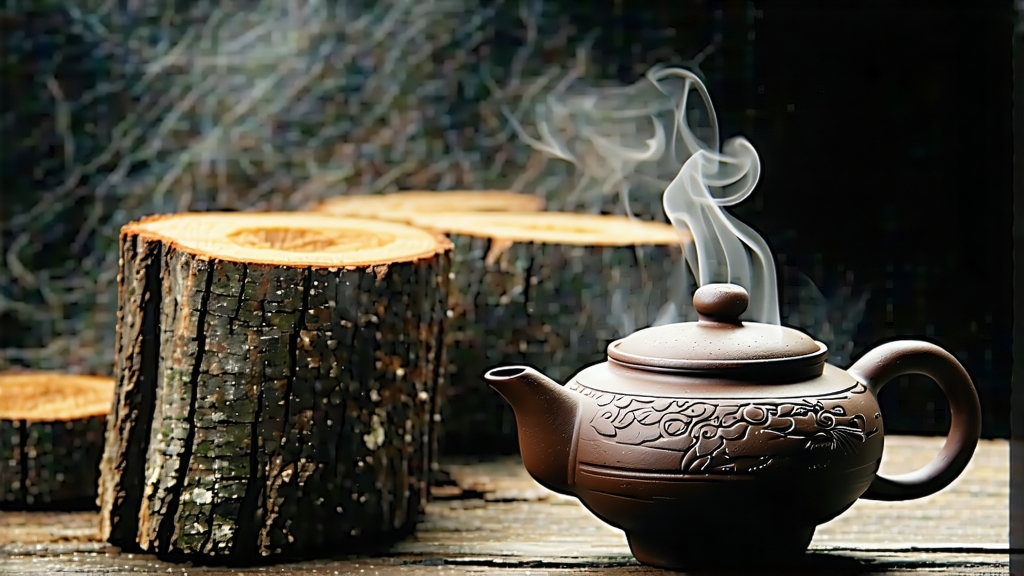
If you ask a Guangxi truck-driver what keeps him awake on the serpentine mountain roads, the answer is rarely coffee; it is a dented tin of Liupao. For three centuries this coal-black, camphor-scented tea has been the unofficial fuel of southern China, yet outside the Middle Kingdom it remains one of the best-kept secrets of the post-fermented family. Liupao (literally “Six Forts”) is not simply another dark tea; it is a living time-capsule of terroir, trade and microbial artistry that begins in the mist-wrapped foothills of Guangxi and ends in a cup that tastes of wet earth, dried longan and a whisper of wintergreen.
History: From War Horses to Waterfront Warehouses
The story starts in the Qing-era Qianlong reign (1736-1795) when the imperial court needed war-horses from the southern border. Tea was the currency. Caravans left Guangxi laden with rough, sun-dried leaves compressed into 40-kilo baskets, crossed the Yunnan–Guizhou plateau and exchanged the cargo for Mongolian steeds in the ancient horse markets. The tea endured monsoon rains, saddle friction and months of body heat, arriving at destination dark, mellow and unexpectedly delicious. Traders christened it “Liupao” after the six strategic forts that guarded the route. By the late 19th century Cantonese merchants had transplanted the trade to the Pearl River Delta, stacking the baskets in humid waterfront godowns where camphor wood was stored for export. The volatile vapors seeped into the tea, gifting the signature “betel-nose” fragrance that still defines premium Liupao today.
Terroir: The Subtropical Fingerprint
Guangxi’s Dayao and Cangwu counties sit on red lateritic soil rich in iron and potassium. The monsoon climate—2,000 mm of rain, 78 % humidity and a 17 °C annual mean—creates a natural incubator for the indigenous microbes Eurotium cristatum and Aspergillus niger, the same “golden flowers” coveted in Fu brick tea but here appearing as microscopic constellations on the leaf spine. The native cultivar, Camellia sinensis var. sinensis cv. Guangxi Daye, possesses unusually thick cell walls that survive repeated pile-fermentation without collapsing into mush, allowing the tea to be re-steeped a dozen times while still delivering a syrupy body.
Craft: The Double Fermentation Odyssey
Unlike Yunnan ripe pu-erh that is wet-piled once, Liupao undergoes a two-stage fermentation that can last three years. First, the freshly picked leaves are withered under banana-leaf shades, pan-fired at 280 °C for eight minutes to kill green enzymes, then rolled on bamboo trays until the leaf edge serrations crackle. The crude maocha is piled 70 cm high in a humid room for 25 days; workers turn the heap every 48 hours, spraying it lightly with mountain spring water to maintain 28 °C and 85 % humidity. When the leaf core turns chestnut-brown and emits a sweet potato aroma, the first ferment is complete.
The tea is now steamed, packed into cylindrical bamboo baskets lined with fresh camphor leaves and pressed with 50-kg stones. The baskets are transferred to karst caves whose year-round temperature hovers around 20 °C. Here the second, slower ferment commences: airborne yeasts interact with camphor terpenes, oxidizing catechins into theaflavins and thearubigins while breaking down caffeine–tannin complexes. After 36 months the leaves have shrunk to half their original volume, the color is jet with russet flecks, and a cross-section reveals a glistening “golden star”—a sign of successful maturation.
Grades & Shapes: From Loose to Lemon-Sized Bricks
Liupao is sold in four official grades—Super, First, Second and Third—based on leaf size and proportion of tips. The most traditional form remains the 40-kg “big basket,” but modern micro-piles are pressed into 100 g mini-bricks, 5 g “dragon pearls” and even 1 g instant crystals for cold brew. A rare vintage is the “camphor-wood tong,” a 30-cm hollow log packed with tea and sealed with bees